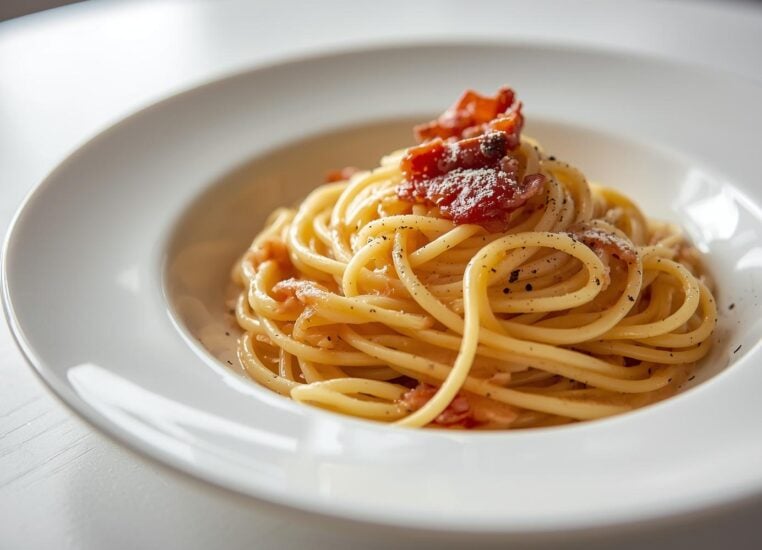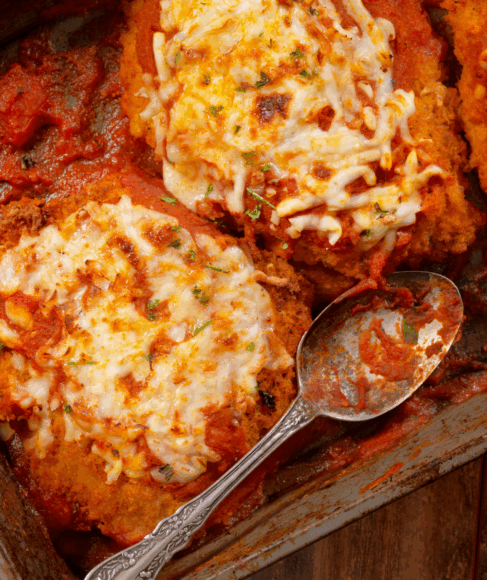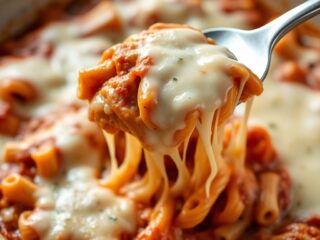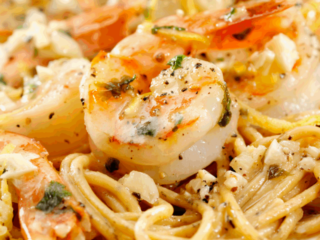I am on a mission to prove that making authentic Spaghetti Carbonara at home is way easier than you might think!
This classic Italian pasta dish requires just a handful of simple ingredients but delivers restaurant-quality results in under 30 minutes.
The magic happens when hot pasta meets eggs and cheese, creating a silky, creamy sauce without using any actual cream.
My foolproof method will help you avoid the dreaded “scrambled egg pasta” that many home cooks fear.
Whether you’re cooking for a special date night or just craving some serious comfort food, this carbonara recipe is guaranteed to impress!
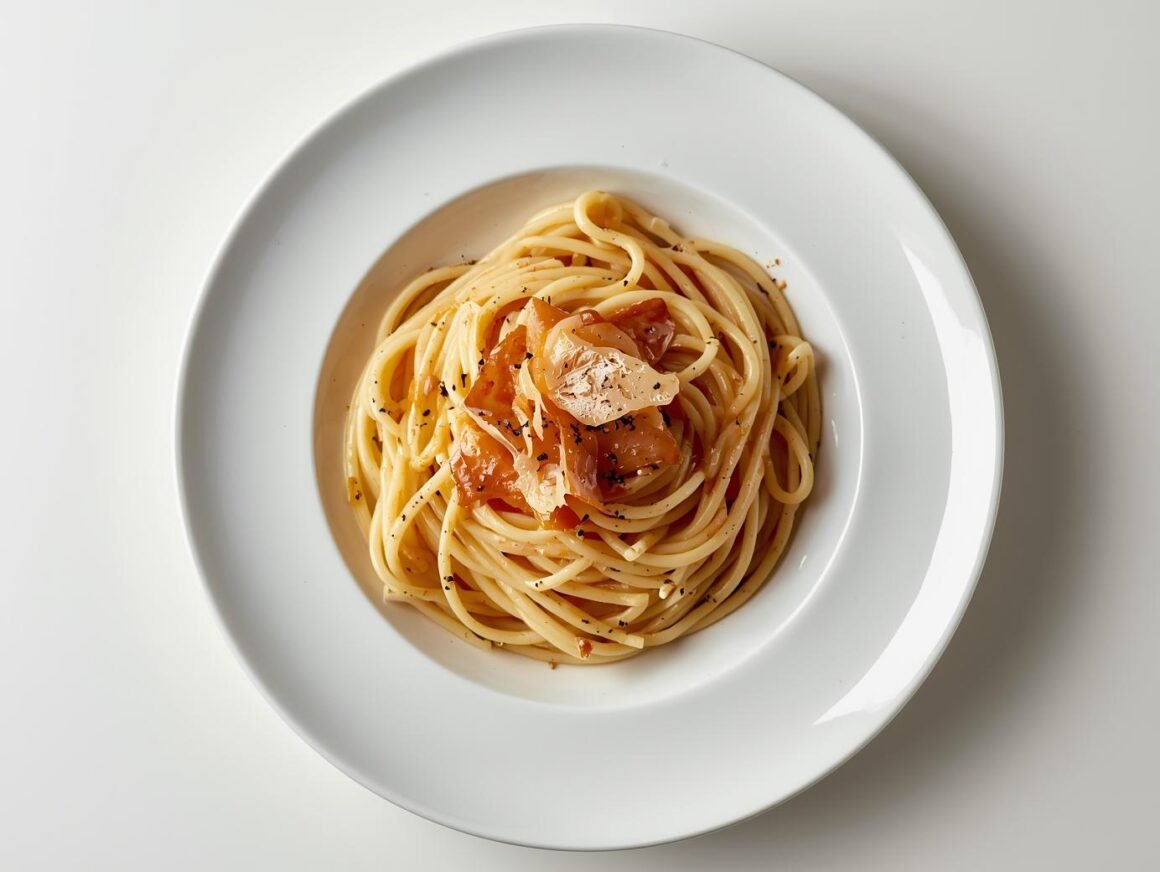
What Is Spaghetti Carbonara?
Spaghetti Carbonara is one of Rome’s four classic pasta dishes.
This beloved Italian staple combines al dente spaghetti with a silky sauce made from eggs, hard cheese, cured pork, and black pepper.
Unlike many creamy pasta dishes, authentic carbonara contains no cream – the creaminess comes entirely from the eggs and cheese emulsifying with the hot pasta.
The origins of carbonara are debated, but one popular theory suggests it was created for Italian charcoal workers (carbonari) who needed a hearty, satisfying meal.
Others believe it gained popularity during World War II when American soldiers in Italy combined their bacon and egg rations with local pasta dishes.
What makes carbonara special is its simplicity.
With just a few high-quality ingredients, you can create a luxurious pasta dish that’s greater than the sum of its parts.
The key is in the technique, getting that perfect silky sauce without scrambling the eggs.
Ingredients To Make this Recipe
The beauty of carbonara lies in its simplicity.
You only need a handful of ingredients to create this delicious dish.
However, because there are so few components, the quality of each ingredient really matters. Here’s what you’ll need:
| Ingredient | Amount | Notes |
| Spaghetti | 1 pound (450g) | You can also use bucatini or fettuccine |
| Guanciale or Pancetta | 6 oz (170g) | Diced into ½-inch pieces (can substitute thick-cut bacon) |
| Eggs | 3 whole eggs + 2 egg yolks | Room temperature for best results |
| Pecorino Romano | 1 cup (100g) | Freshly grated (not pre-packaged) |
| Parmesan | ½ cup (50g) | Freshly grated Parmigiano Reggiano |
| Black Pepper | 1-2 teaspoons | Freshly cracked, to taste |
| Salt | To taste | For pasta water and final seasoning |
Ingredient Tips: For the most authentic flavor, try to find guanciale (cured pork jowl).
If unavailable, pancetta makes a great substitute.
As a last resort, thick-cut bacon works too, though it will add a smoky flavor that’s not traditional.
Always grate your cheese fresh, pre-grated cheese contains anti-caking agents that prevent proper melting.
Equipment To Use
- Large pot for cooking pasta
- Large skillet (preferably 12-inch)
- Medium mixing bowl
- Cheese grater or microplane
- Tongs for handling pasta
- Whisk
- Measuring cups and spoons
Step-by-Step Instructions
Follow these steps carefully to achieve the perfect creamy carbonara sauce without scrambling the eggs:
Step 1: Prepare Your Ingredients
Before you start cooking, make sure all your ingredients are ready.
Dice the guanciale or pancetta, grate the cheeses, and bring your eggs to room temperature.
Having everything prepared will make the cooking process much smoother, especially since timing is crucial for carbonara.
Step 2: Cook the Pork
Add the diced guanciale or pancetta to a large, cold skillet, then turn the heat to medium-low.
Cook slowly until the fat renders and the meat becomes crispy but not burnt, about 8-10 minutes.
The slow cooking releases all the wonderful flavors.
Once crispy, transfer the meat to a plate but leave the rendered fat in the pan it’s liquid gold for flavoring our sauce!
Step 3: Boil the Pasta
While the pork is cooking, bring a large pot of water to a boil. Add about 1 tablespoon of salt (not too much, as the cheese and pork add saltiness).
Add the spaghetti and cook until al dente according to package instructions, usually 8-10 minutes.
Reserve 1 cup of pasta water before draining, this starchy water is essential for creating a silky sauce!
Step 4: Prepare the Egg Mixture
While the pasta cooks, whisk together the whole eggs, egg yolks, grated Pecorino Romano, Parmesan, and plenty of freshly cracked black pepper in a medium bowl.
This mixture will become our creamy sauce once it meets the hot pasta.
Step 5: Combine Everything
This is the critical step! Turn off the heat under the skillet with the pork fat.
Drain the pasta (remember to save some pasta water first!) and immediately add it to the skillet.
Toss quickly to coat the pasta in the fat.
Working quickly, pour in the egg and cheese mixture while continuously tossing the pasta.
The residual heat will cook the eggs gently, creating a creamy sauce without scrambling.
If the sauce seems too thick, add a splash of the reserved pasta water to loosen it up.
Add the crispy pork back to the skillet and toss everything together until well combined and the sauce coats each strand of pasta beautifully.
Step 6: Serve Immediately
Carbonara is best enjoyed immediately while hot! Divide the pasta among warmed plates and finish with an extra sprinkle of grated cheese and freshly cracked black pepper.
Serve right away to enjoy the perfect creamy texture.
“The secret to perfect carbonara is working quickly and keeping everything moving. Don’t be afraid – with a little practice, you’ll master this classic Italian dish!”
Tips for Carbonara Success
Do’s
- Use room temperature eggs to prevent them from cooling too quickly
- Reserve pasta water – it’s essential for adjusting sauce consistency
- Work quickly when combining hot pasta with egg mixture
- Keep tossing constantly to prevent eggs from scrambling
- Use freshly grated cheese for proper melting
Don’ts
- Don’t add cream – authentic carbonara doesn’t use it
- Don’t return the skillet to heat after adding eggs
- Don’t use pre-grated cheese (it contains anti-caking agents)
- Don’t overcook the pasta – it should be al dente
- Don’t let the dish sit too long before serving
Troubleshooting: If your sauce ends up a bit scrambled, don’t worry!
It will still taste delicious. Next time, try working more quickly or letting the pasta cool for a few seconds before adding the egg mixture.
Variations and Substitutions
While purists might argue that classic carbonara shouldn’t be modified, here are some common variations and substitutions if you need to adapt the recipe:
| Ingredient | Substitution | Notes |
| Guanciale | Pancetta or thick-cut bacon | Bacon will add a smoky flavor not present in traditional carbonara |
| Pecorino Romano | All Parmesan | Will be milder in flavor but still delicious |
| Spaghetti | Bucatini, fettuccine, or rigatoni | Different shapes work well but change the texture experience |
| Regular pasta | Gluten-free pasta | Works fine but may need extra pasta water to prevent sticking |
| None (classic recipe) | Add peas or asparagus | Not traditional but adds color and nutrition |
| None (classic recipe) | Add garlic | Some recipes include it for extra flavor |
A Note on Cream: Many non-Italian recipes add cream to carbonara. While this creates a delicious pasta dish, it’s not authentic carbonara. The beauty of traditional carbonara is achieving that creamy texture using just eggs and cheese!
Frequently Asked Questions
Will the raw eggs in carbonara make me sick?
The hot pasta cooks the eggs enough to be safe for most people. However, the eggs remain somewhat undercooked. If you’re pregnant, elderly, or have a compromised immune system, you may want to use pasteurized eggs as a precaution.
Why did my eggs scramble instead of forming a creamy sauce?
This happens when the eggs get too hot too quickly. To prevent this, make sure to: 1) Remove the pan from heat before adding the pasta, 2) Let the pasta cool for a few seconds before adding the egg mixture, and 3) Keep tossing constantly to distribute the heat evenly.
Can I make carbonara ahead of time?
Carbonara is best enjoyed immediately after cooking. The sauce tends to thicken and lose its creamy texture as it sits. If you must reheat leftovers, do so gently with a splash of water to loosen the sauce.
Is carbonara supposed to be very peppery?
Yes! Freshly cracked black pepper is a key flavor component in authentic carbonara. The dish should have a noticeable peppery kick, but you can adjust the amount to your taste.
Spaghetti Carbonara Recipe
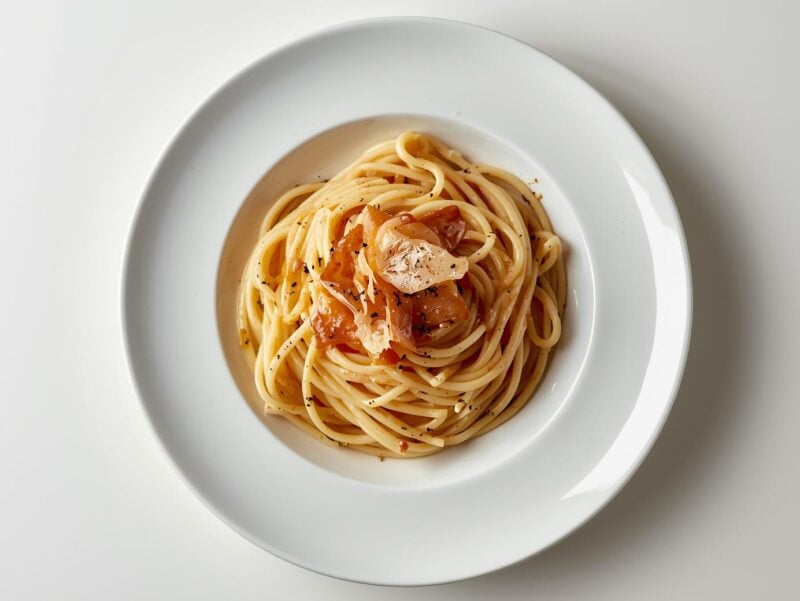
Authentic Spaghetti Carbonara
A classic Roman pasta dish made with eggs, cheese, pork, and black pepper.
Prep Time: 10 minutes
Cook Time: 20 minutes
Total Time: 30 minutes
Servings: 4
Calories: 650 per serving
Author: Your Name
Ingredients:
- 1 pound (450g) spaghetti
- 6 oz (170g) guanciale or pancetta, diced
- 3 whole eggs + 2 egg yolks, room temperature
- 1 cup (100g) Pecorino Romano, freshly grated
- ½ cup (50g) Parmesan, freshly grated
- 1-2 teaspoons freshly cracked black pepper
- Salt, to taste
Instructions:
- Bring a large pot of salted water to a boil for the pasta.
- In a large skillet over medium-low heat, cook the diced guanciale or pancetta until crispy, about 8-10 minutes. Remove the meat but keep the rendered fat in the pan.
- While the meat cooks, whisk together eggs, egg yolks, grated cheeses, and black pepper in a medium bowl.
- Cook the spaghetti in the boiling water until al dente. Reserve 1 cup of pasta water before draining.
- Working quickly, add the drained pasta to the skillet with the pork fat. Toss to coat.
- Remove the skillet from heat. Add the egg and cheese mixture while continuously tossing the pasta to create a creamy sauce without scrambling the eggs.
- Add the crispy meat back to the pasta. If the sauce is too thick, add a splash of reserved pasta water to reach desired consistency.
- Serve immediately with extra grated cheese and black pepper on top.
Ready to Try This Authentic Spaghetti Carbonara?
Now you have all the knowledge you need to create authentic Spaghetti Carbonara at home!
This classic Italian dish might seem intimidating at first, but with these step-by-step instructions, you will be making restaurant-quality carbonara in no time.
Remember, the key to perfect carbonara is working quickly and using high-quality ingredients.
Don’t worry if it doesn’t turn out perfectly the first time, cooking is all about practice and enjoying the process!
I’d love to hear how your carbonara turns out! Did you stick to the traditional recipe or try one of the variations?
Share your experience in the comments below or tag me on social media with your carbonara creations!
Love This Recipe?
Save it to Pinterest for later or share it with friends!

